Unsymmetric Section Analysis
Assuming we are analyzing a bridge with the following section.
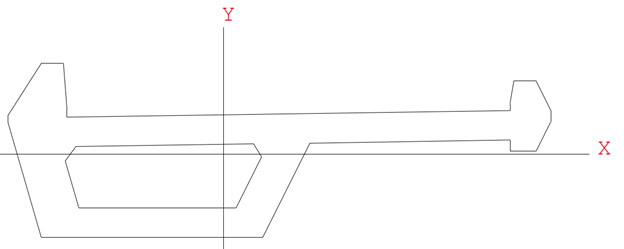 Fig 1
Fig 1
It looks not easy even to calculate section properties. But midas software has a powerful function to calculate these section properties for us. Just select PSC-Value>Define by Coordinates, then midas Civil will do the rest, or at least most of them. The methodology to calculate section properties from coordinates requires repeated calculation.
Looks perfect? Let's assume our bridge section is a much simpler one like the one below.
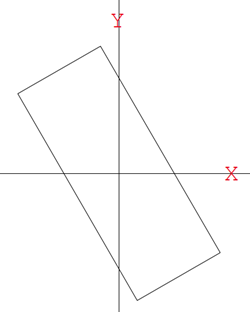 Fig 2
Fig 2
We can feel something uncomfortable proceeding with the design with the section properties based on axis X and Y.
This is because axis X and Y are not the principal axes. In Fig 1 and Fig 2, midas Civil will calculate section properties for the X and Y axis and then interprets these Ix and Iy are for the principal axis, which is not true. This is a very common mistake and I have personally seen a girder failure due to these effects.
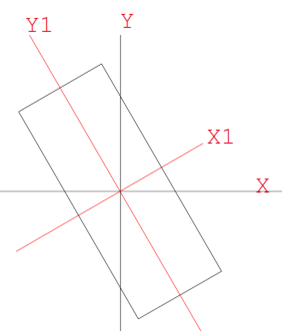 Fig 3
Fig 3
We should let midas know X and Y are not principal axes and X & Y have rotated some angles from the principal axis X1 and Y1. In other words, we should let midas know the section properties for principal axis X1 and Y1, and how the member was rotated from the principal axis X1 and Y1. Some software has the capability to find the principal axis internally, but this is very exceptional.
 Fig 4
Fig 4
We must calculate section properties for principal axis X1, and Y1 (either from Fig 3 or Fig 4, but Fig 4 looks much easier for us, humans) and let midas know how the principal axis was rotated when we define members.
Let's go back to Fig 1.
 Fig 5
Fig 5
Axis X and Y are not principal axes because this section is not a symmetrical section. We must calculate section properties for the principal axis X1 and Y1, and then let midas know how it was rotated from the global axis. Without this information, there is no way that midas can identify what are the values for the principal axis and how the member was rotated.
It was easy in Fig 4 to calculate section properties for the principal axis X1 and Y1. But it looks not easy in Fig 5.
Why principal axis matter?
Assume we have a simple beam with Ix = 16.5. If apply vertical load P = 100 kips at the section CG, what would be the vertical deflection? Looks very simple problem.

Is this correct?
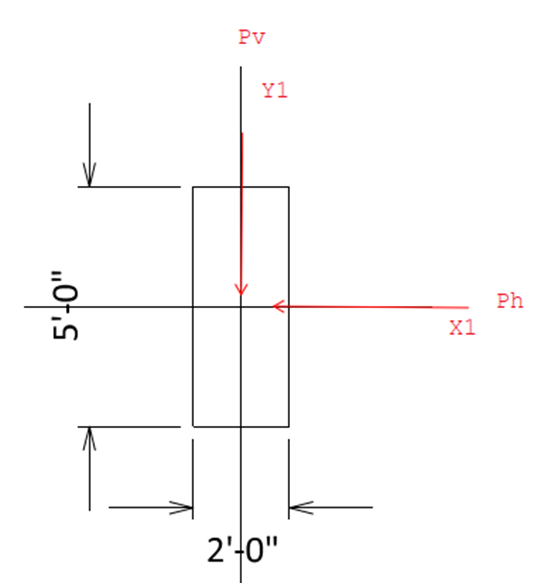 Fig 6
Fig 6
Assume a rectangular section as shown in Fig 6. If the force Ph and Pv are applied at the section CG, what are the deflections? Assume Pv = 86.7 kips and Ph = 50 kips.

If we draw the loads and deflections on the scale, it looks like Fig 7.
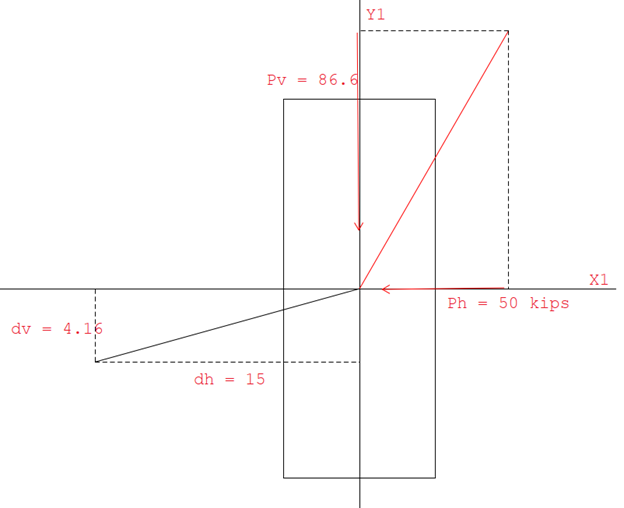 Fig 7
Fig 7
The load and deflection directions are not matched. This makes sense because the moment of inertia for each axis is different and the deflection depends not only on the load magnitude but also on the moment of inertia.
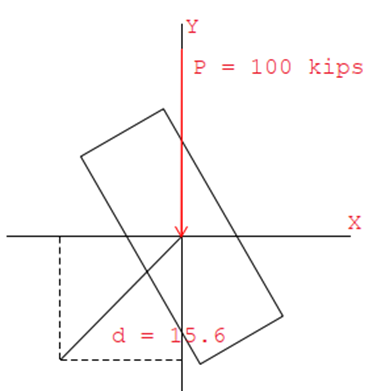 Fig 8
Fig 8
If we rotate Fig 7 to match the loading direction to the vertical axis, it will look like Fig 8. We can see that the deflection direction is not matched with the load direction. At first, this may look weird, but this is true and really what would happen in the unsymmetric sections.
If we give only Ix = 16.5 (correct value for x-axis) to midas, midas will interpret Ix as the moment of inertia for the principal axis and calculate vertical deflection only as 6.07 which is not true.
Even though limited software can do these calculations automatically, this is not usual, and we have to let midas know the moment of inertia for the principal axis and how the member is rotated. Otherwise, midas gives us wrong results.
Step 1
Calculate Ix, Iy, and Ixy for arbitrary selected axis XY.

Step 2
Calculate principal axis angle and moment of inertial for principal axis.


Step 3
midas Civil can calculate section properties only for the horizontal and vertical axis. To let midas Civil calculate the moment of inertia for the principal axis, rotate the axis to match the principal axis with the horizontal and vertical axis. midas Civil will calculate the moment of inertia for the principal axis 1, and 2.

Step 4
Rotate axis within midas Civil to represent the real structure orientation.

Discussion
It looks very straightforward. However, we must calculate Ix, Iy, and Ixy in step 2. Unfortunately, midas Civil does not have the capability to calculate Ixy and we cannot use midas Civil section calculator at this step. The easiest way is to use CAD programs. Most CAD programs have the capability to calculate section properties for the given axis and for the principal axis. Otherwise, we can develop a simple excel to calculate Ixy.
These calculations look tricky, but this is the only way to model unsymmetric sections. Limited programs have the capability to perform these calculations internally, but this is exceptional.
#Unsymmetric Sections
#Principal Axis Calculation
#Structural Analysis Software

He is a Senior Supervising Engineer with a high level of expertise in the design and analysis of suspension bridges. He has a solid fundamental understanding of structures and can apply his knowledge exceptionally well to the design and analysis of highly complex structures. He is also a strong communicator, able to identify and distill the key information that is relevant to the task at hand and present it in a clear and quickly understandable manner.


![Design and Practical Examples of Baseplates and Anchor Rods [sample download]](https://2495902.fs1.hubspotusercontent-na1.net/hubfs/2495902/%EC%8D%B8%EB%84%A4%EC%9D%BC22.png)
![Understanding Drafting Standards [ Drawing download ]](https://2495902.fs1.hubspotusercontent-na1.net/hubfs/2495902/%EC%8D%B8%EB%84%A4%EC%9D%BC24.png)
![Key Changes in ACI 318-19: A New Standard for Structural Design [ PDF download]](https://2495902.fs1.hubspotusercontent-na1.net/hubfs/2495902/%EC%8D%B8%EB%84%A4%EC%9D%BC21-1.png)
![Design and Practical Examples of Lug design(ASME BTH-1) [sample download]](https://2495902.fs1.hubspotusercontent-na1.net/hubfs/2495902/%EC%8D%B8%EB%84%A4%EC%9D%BC20-1.png)


